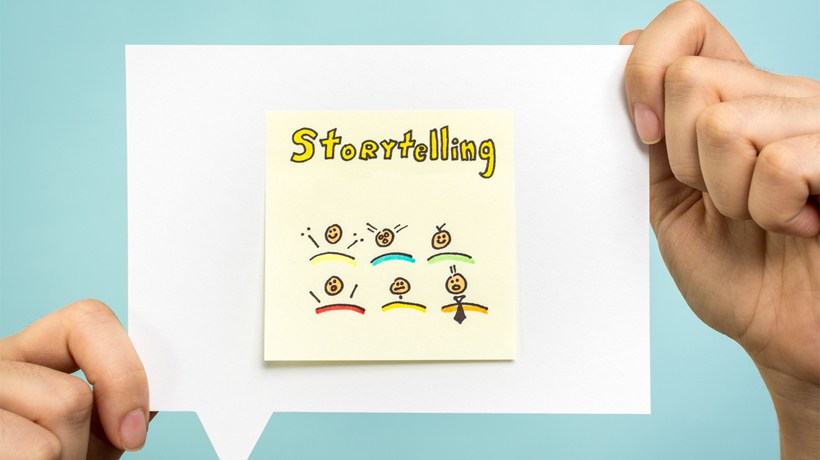How To Create Multi-Sensory eLearning Courses
Are you looking for an eLearning approach that offers online learners all of the sights, sounds, and tactile elements of the subject matter? If so, then instructional design for multi-sensory learning may be the perfect solution. It gives your online learners the power to explore the eLearning course content in a more profound way and caters to virtually all learning needs. Though it may seem unfeasible to trigger the senses without face-to-face instruction, there are actually a number of ways that you can integrate these principles into your next eLearning course.
- Sight: Include visually compelling imagery and videos.
Include images, eLearning videos, online presentations, and graphics that pull online learners into the eLearning experience and help them focus on the subject matter. By nature, human beings are visual. We can absorb eLearning course content more rapidly and effectively if it appeals to our sense of sight, which means that visual eLearning course content boosts retention and knowledge comprehension. Use colors to evoke certain emotions and creative fonts to convey a specific meaning or tone. Whichever visually compelling media you use, make sure that they are all relevant and on-topic. In other words, don’t include an image just for the sake of wowing your online learners, particularly if it has nothing to do with the goals and objectives of the eLearning course. Also, be wary of the colors you choose, as different colors correspond to different emotions. - Sound: Pull them into the eLearning experience with immersive audio.
Audio in eLearning comes in many forms, from sound effects and narrations to eLearning course soundtracks. The key is to find the audio components that immerse your online learners in the eLearning experience and allow them to escape into the subject matter. More so, it should blend into the eLearning course in such a way that is becomes virtually unnoticeable. The tell-tale sign of effective eLearning audio is that it is so powerful it blends into the background while creating a certain ambiance or emotion. Even a well-spoken narration can give online learners the chance to get more out of the eLearning course and highlight the key takeaways. Make sure that you opt for royalty free music and sound effects to avoid copyright issues. Also, avoid using multimedia that may be distracting or overbearing and allow online learners to control the playback. Bear in mind that some individuals may be accessing your eLearning courses in a public place where listening may not be possible. - Touch: Create tactile eLearning scenarios and mobile learning courses.
This is one of the senses that is often left out of eLearning experiences, primarily because it is implausible to handle objects and interact with the eLearning course content on a tactile level through a computer screen. However, eLearning scenarios, simulations, eLearning games, and even mobile learning activities can help you integrate the sense of touch into your multi-sensory eLearning course. The act of clicking on the screen to make a choice or embark on a learning path can make your eLearning experience more interactive and immersive. It gets the online learner involved and prompts them to explore the virtual environment in a more profound way. Swiping the screen on their mobile devices allows them to come into contact with the eLearning course content, instead of merely being a passive learner. - The Complete Package: Use the power of storytelling to transport their senses.
If you want to include virtually all of the senses into your eLearning course you can rely on storytelling. Stories can be particularly powerful when they are in the form of eLearning videos or online presentations. Here is a breakdown of how stories offer the complete package:- Sight: Online learners watch images or eLearning videos that correspond to the story, such as photos that show the various characters or settings.
- Sound: Background music and sound effects make the story more dynamic and add another level of realism. Ensure that the sound plays on the key emotions within the storyline. For example, a dramatic moment might have piano music while a more upbeat scene could have a whimsical flute soundtrack.
- Touch: Participants must click through to see the next chapter or section of the story. You can also make your story a branching scenario or eLearning game to make it even more tactile.
- Taste and Smell: It’s challenging to include the taste buds and olfactory system in your eLearning course design, but it is possible. These two senses can be brought into the mix by using vivid imagery and descriptive words. For example, describing the taste of a food or the smell in the air will automatically trick the mind into visualizing the environment.
- Concentrate on one topic at a time.
It is relatively easy to get carried away when you are creating multi-sensory eLearning courses. After all, there are so many senses to include and a variety of different ways to bring them into your eLearning experience. However, it’s important to stick to one subject or idea at a time so that you avoid cognitive overload. This also helps you stay on track and keep the spotlight on the key takeaways. For example, instead of trying to cover the entire eLearning course in a single multi-sensory story, use many different stories to explore sub-topics. Keep in mind that it is possible to overwhelm the senses during an eLearning course, which means that you need to know how every element will affect your online learners. Don’t try to pack too much into your eLearning activity and have a clear idea of which emotions you are trying to evoke before you begin the eLearning course design process.
Make your eLearning course more immersive, interactive, and emotionally-centered by using these multi-sensory principles. If your online learners can touch, see, and hear the subject matter they are more likely to remember it…and that is the primary goal of any eLearning experience.
Appealing to your online learner’s senses is just one way to immerse them in the eLearning experience. Read the article 6 Scientifically Proven Brain Facts That eLearning Professionals Should Know to discover additional scientifically proven brain facts that can help you increase engagement, knowledge retention, and emotional connectivity.








